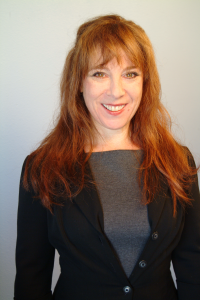 An Interview with Dr. Shira Tarrant
An Interview with Dr. Shira Tarrant
Shira Tarrant, Associate Professor in the Department of Women’s, Gender & Sexuality Studies at California State University, Long Beach is a nationally recognized expert on issues of gender politics and popular culture. She is currently working on her fifth book, New Views on Pornography.
How, in your view, is pornography impacting the current generation of young women and men?
Metaphorically speaking, young people are swimming in media. Porn is ground zero when it comes to our culture’s images of beauty, sexuality, desire, and relationships.
When I go to college campuses, I speak with students about the pornography that they have watched. I believe that if we as educators simply adopt a “Just Say No” campaign regarding pornography then we are missing out on one of the most important conversations we can have with this generation about sexuality and relationships. So I talk to young people about how porn has impacted our expectations about what we are supposed to look like, what we want our partners to look like, what we are supposed to do in sexual situations, and what our partners are supposed to do.
How does this on-line pornography impact the typical bat or bar mitzvah age child?
Pornography has an appeal to young people’s sense of desire and curiosity and although I focus on college age students, I know that some twelve and thirteen year olds are watching porn. Girls in particular are being told that if they want to be “wild” and “free” then all they have to do is lift up their shirts in front of a camera. And boys are being told that the most important thing they can do is to hook up with girls. This is a very limiting idea of freedom and has very little to do with a healthy pursuit of pleasure.
I am concerned that girls are getting the primary message that what matters most in life is being sexually desirable. I don’t think that there is something wrong with a girl expressing her beauty or expressing her sexuality, but when that expression becomes the primary way in which we judge a girl’s worth then we need to educate both girls and boys to be critical of our cultural norm.
What do you mean when you use the term “porn literacy”?
Porn literacy as I see it is part of media literacy – and media literacy should begin as soon as a child is able to think critically about the images that they are consuming. Specific content regarding pornography literacy requires a sensitivity to the age of the students and the level of comfort of an educator and the community in regard to the issue. But it is clear that teens are thinking about what it means to be sexy and being told to desire certain things and they need help decoding the messages regarding gender and gender expectation implicit in pornography.
Pornography blurs issues of sexual consent. Acts of non-consent are sexualized and used as a way to heighten drama. The blurry message that teens and others receive is that there is never a true “no” in a sexual situation. In pornography, all moments when touch is resisted are really just part of a tease or part of a game – as a result, there is never a line that can be drawn to protect unwanted touch.
Have you seen examples of effective education for teens on sexual assault?
I was impressed by what filmmaker Nancy Schwartzman did with her “Where Is Your Line?” film and campaign about sexual consent. Schwartzman was raped while she was spending a year volunteering at a cultural institution in Jerusalem. In the film, Schwartzman confronts the man who assaulted her and explores the emotions behind the assault from both sides. The film helps young women and men to think about what they are comfortable and not comfortable with in a sexual situation and helps them give voice to the feelings that may need to express when the time comes to draw the line.
I’m also encouraged to hear about the work that Moving Traditions is advancing in the Jewish community to address the many challenges that teens face and to raise issues of consent regarding first romantic encounters. My nephews and nieces have gone through Jewish day schools and I hope that day school educators will have the opportunity to learn from this work.
How can parents or educators do a better job of guiding teens?
When we act from a place of moral panic or anxiety about teen sex we end up talking to teens about sexual health but never help them to navigate questions that deal with their social realities. Education should have the goal of instilling a sense of agency in young people – helping them to think about the roles that they want to play, what they feel comfortable about and what they feel uncomfortable about. When young people have words for what are surely complicated feelings, when they have thought through what is on their “o.k. list” and what isn’t, then they will not only help themselves in difficult situations, but they will be there for their friends.

 An Interview with Dr. Shira Tarrant
An Interview with Dr. Shira Tarrant